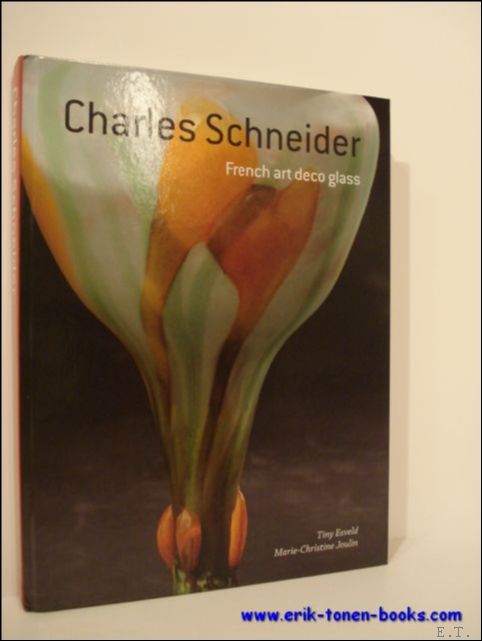New arrivals
ESVELD, Tiny;
Charles Schneider French art deco glass
Tiny Esveld, 2015.. Hardcover, 23 cm x 29 cm, 288 pages, with 500 photographs in color. fine copy !.
reference book !! In 1913 the two brothers had saved enough to buy their own glassfactory, together with a friend, Henri Wolf. This factory was located in Epinay-sur-Seine near Paris. 1913 was not a good year to start a business. In 1914 the first world war broke out and till 1918, the brothers did not really start to make art glass. In 1918 they needed money to relight their furnaces and they accepted the help from an English investor. At that moment they were no longer in control of their glassworks. The investor wanted profit and in 1923 it led to a rupture. The Schneider brothers scraped every bit of money that they could find to buy their factory back. Luckily they succeeded. From then on the success came. In 1924 the Schneider glassworks build the biggest concrete hall ever with the most modern furnaces. In 1926 they are the biggest glassfactory in France with almost 500 employees. In 1925 Charles was asked to be a member of the jury at the Exposition des Art Decoratifs in Paris. This meant that his work could not enter the exposition and would not compete with the work of the other artists. It was an honour to be a member of the jury, so he accepted, but maybe it had been better if he had declined for the honour and participated as an artist. He would have swept the competition away. His coupe bijoux and the big black footed bowls in contrasting colours were an enormous success all over the world. Most of their production went to North and South America. The glass of Charles Schneider has such joyfull colours, bright and happy colours like orange and yellow. It looks like the sun shines every day. The little bijoux vases are jewels of technique and shape and colour. The ?Le verre Francais? line had a great success with the stylized flowers in stunning colours. As the majority of the le verre francais glass , was only etched one time, the producing costs were low. The general public loved these bright vases. The success of the Schneider factory continued until 1929. In 1929 the banks on Wall street crashed and rich people lost a lot or all of their money. The market for luxury goods collapsed. Schneider tried to survive by cutting down costs, but this does not help when there are no buyers left. After a struggle of a three years the furnace extinguised in 1932. The factory filed for bankruptcy in 1938. Charles Schneider died in 1953 before the revival of his glass. In the eighties his glass was rediscovered. It has its place now among Galle and Daum glass as their equivalent.
EUR 40.00









